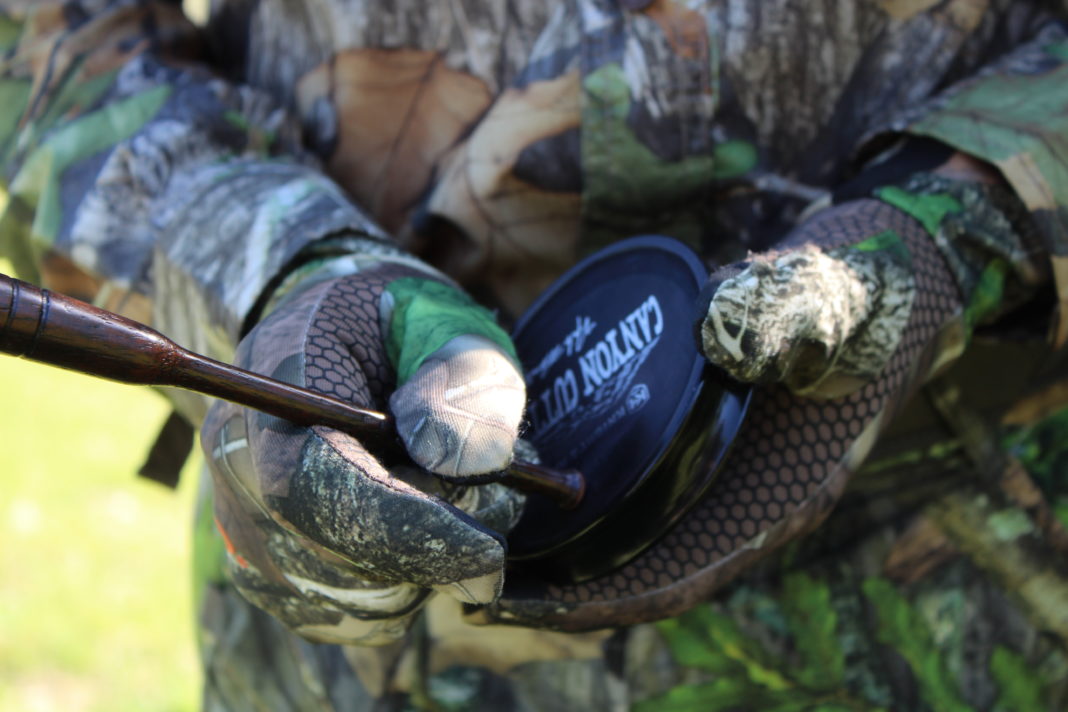Gobbles, yelps, clucks, and purrs. These vocal sounds are easily recognized by turkey hunters, especially spring turkey hunters. I have been told, and eventually came to believe, that fall turkeys including toms are silent. I finally found out the truth, and now know that fall turkeys are indeed vocal and hunters can use it to their advantage to call in a turkey this fall. Hunters just need to start thinking like a turkey hunter in autumn rather than a turkey hunter in spring.
One thing that does not change from spring to fall when hunting turkeys is if you are able to get a mature gobbler excited, he is liable to mess up and become vulnerable. The best way to do this is to sound like a gobbler when you call making the live gobbler believe another is moving in on his turf. Turkeys are very territorial and live by a pecking order. Gobblers are always looking for a good fight with a new tom in the neighborhood.
In the fall, turkeys are more interested in finding food, whereas in the spring, their thinking revolves around breeding. This is why it is so beneficial to know where their food sources are. Through your scouting efforts early in the season, find soft mast such as dogwood berries, wild grapes, persimmons and the like.
As the season progress, oaks and maples will start dropping hard mast. The thing with these trees is that they do not drop fruit every year. It will take some legwork to find which trees have nuts and which ones do not.
Full roosting areas should not change from spring to fall as long as the habitat and food sources do not. Find the fall roost site and you have found the best location to start your hunt from.
It is very important to get set up near a roost on the same side or at least in the same direction from where they flew up the night before. If you are not in position well before the sun is up, you have waited too long. When a turkey calls, call back with the same, just be more excited.
There is a good way to distinguish between a gobbler and hen cut, purr, cluck, and other sounds. Sometimes it is possible to tell the difference between a hen yelp and a tom yelp. A gobbler yelp is drawn out with a slower rhythm.
There are many types of calls available, but the best for fall turkeys is a quality slate call. With a good slate call, a hunter can make realistic purrs, hen yelps, and even gobbler yelps. For the hunter proficient with a mouth call, you can get all of the above plus kee-kees that are so popular with jakes in the fall.
So much goes into being successful in the fall including calling, pecking order, and where a gobbler stands on the social ladder. Turkey hunting in the autumn is a special time to be a hunter. If you have not tried it yet, it is a great reason to get your bow and head back to the woods after your freezer is full of venison, or apply for fall firearm permit.









![The Best Deer Camp Chili [VIDEO] Deer Chili Ingredients, Tomatoes, Chili Spices](/wp-content/uploads/2015/10/Deer-Chili-Deer-Camp-Recipe-218x150.jpg)








![How to Call Elk Early in the Season [VIDEO]](/wp-content/uploads/2016/08/byers003-218x150.jpg)




![Idiots Disturb Hunter: How Would You Have Handled It? [VIDEO]](/wp-content/uploads/2015/10/DSC00110-e1474487693878-100x70.jpg)
![Albino Buck Shocked to Shed His Antlers [VIDEO]](/wp-content/uploads/2015/10/AlbinoDeer-100x70.jpg)